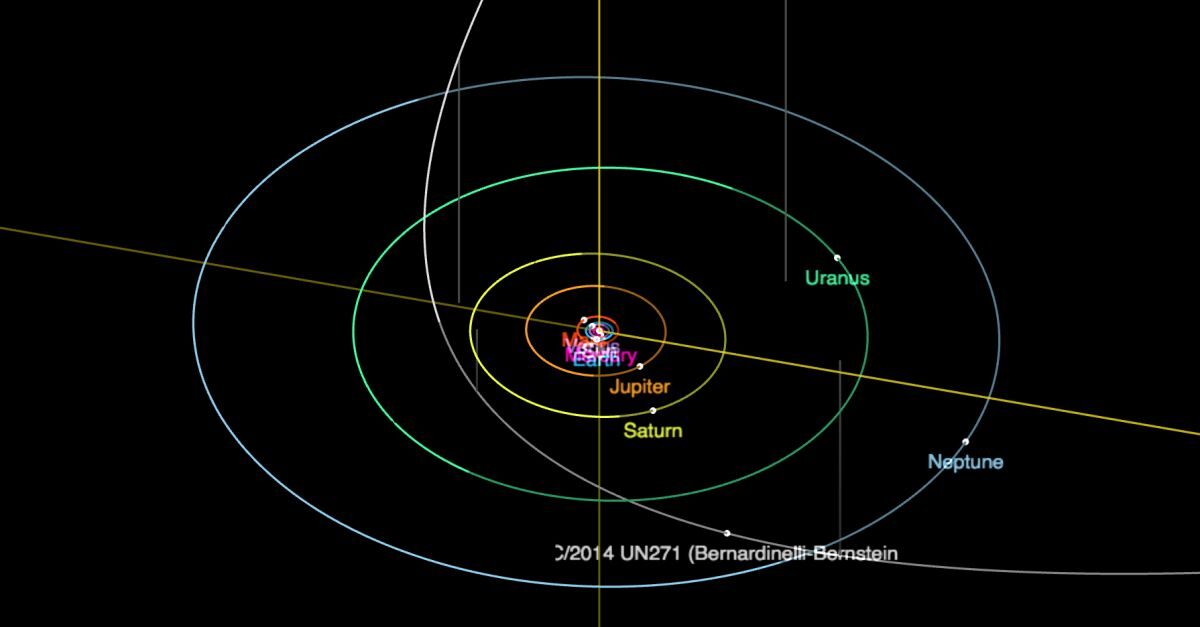
The comet is now known as Comet C/2014 UN271, or Bernardinelli-Bernstein after its discoverers, University of Pennsylvania graduate student Pedro Bernardinelli and astronomer Gary Bernstein.
In 2021 June 19, the circular
MPEC 2021-M53 of Minor Planet Center announced the discovery of an asteroidal object by astronomers
P. Bernardinelli & G. Bernstein (University of Pennsylvania) that they found in CCD exposures obtained with the 4.0-m reflector at Cerro Tololo Interamerican Observatory in the course of the "
Dark Energy Survey", and which they reported as a previously unknown member of the Oort Cloud. The reported astrometry was spanning from 2014 Oct. 20 to 2018 Nov. 8. The new object was designated 2014 UN271. It was hidden among data collected by the 570-megapixel Dark Energy Camera (DECam) mounted on the Víctor M. Blanco 4-meter Telescope at Cerro Tololo Inter-American Observatory (CTIO) in Chile and was announced only now because, in the words of one of the
discoverers, "finding TNOs with DES is a massive computational problem (my PhD was solving this problem). The search itself took 15~20 million CPU-hours, and the catalog production from our 80,000 exposures probably took more than that!"
According to the orbit calculated using data from 2014 to 2018, this object is likely to be a comet from the outer edge of the
Oort Cloud. But 2014 UN271, despite its typically cometary orbit, appeared completely stellar in these archival images when it moved from 29 to 23 AU (for comparison, Pluto is 39 au from the Sun, on average). Below a simulation (
made by T. Dunn) of the orbit of comet C/2014 UN271 showing it path in the Solar System from 1985 to 2049.
A few days after the discovery announcement, 2014 UN271 has been found to show cometary appearance in new CCD images obtained by
observers at station codes L81 & K93.Basically this object, that was first seen as an asteroid of magnitude ~22 by DES in 2014 at a distance of 29 AU, approaching the Sun was growing his coma and tails. As of June 2021, it was 20 AU from the Sun shining at a magnitude ~20.After the discovery of the cometary coma, the new comet has been designated C/2014 UN271 (Bernardinelli-Bernstein).
This comet will reach perihelion, its closest point to the Sun, in January 2031 at about ~11 AU away from the Sun.
